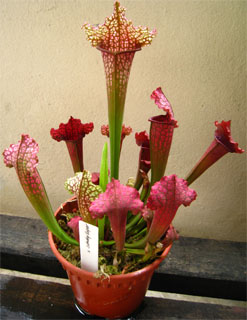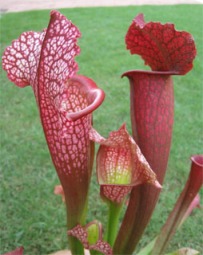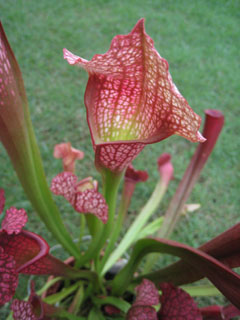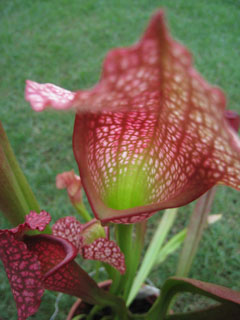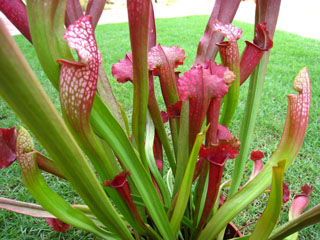 I’d look out for plump flying ants whenever it rains the night before. Fortunately for me, the recent rains brought some.
I’d look out for plump flying ants whenever it rains the night before. Fortunately for me, the recent rains brought some.
They swarm around the lights outside the house and invariably find their way indoors. So I’d get them – before they get in.
I swing my flyswatter around with as much panache as a swashbuckler and my roguish grin widens with each ant I drop into a container.
.
Okay, so it’s a bumper crop of ants with plump heads and abdomens. But much as I appreciate exotic food like fried caterpillars and grasshoppers, these ants are not destined for my dinner plate.
 They’re meant for my Gobbleguts … I think my pitcher plants know I have a treat in store for them.
They’re meant for my Gobbleguts … I think my pitcher plants know I have a treat in store for them.
I kept the ants for a couple of days before using them, so they ended up smelling like fermented shrimps. But I think the pitchers are not going to be too picky.
True enough, they had their mouths open impatiently for their share this morning. The smaller pitchers had an ant or two, while bigger ones gobbled a few more.
I had enough ants for both Tropical and North American pitcher plants. Most of them had seconds and a couple had an extra treat of fresh juicy caterpillars.
They’re truly Gobbleguts indeed.
Wait … did I hear a burp?























